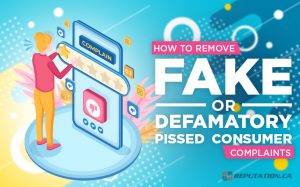Introduction:
Creating a successful licensable brand can be a profitable path for growth and expansion in the fast-paced corporate world of today. Strong brand awareness and appeal that allow third parties to get licenses for the creation and marketing of goods and services under the brand name are known as licensable brands. Licensable brands, which range from recognizable logos and characters to well-known franchises and entertainment properties, have the power to reach new markets and consumers and provide sizable cash streams. What therefore is required to develop a brand that can be licensed? Let’s examine the crucial actions and approach:

Building a strong brand identity

Building a strong brand identity is essential to developing a licensable brand that appeals to customers and draws in licensing partners. Here’s a thorough explanation on how to accomplish it:
Particular Components of Branding:
Create a memorable and eye-catching logo that embodies the goals, character, and values of your company. Make sure it’s adaptable enough to function on different platforms and applications.
Color Scheme:
Select a striking color scheme that captures the spirit of your business and makes your target audience feel the way you want them to. Utilizing color consistently aids in enhancing brand identification.
Typography:
Choose typefaces that improve readability and align with the identity of your business. A visually consistent identity is produced by using the same font style throughout branding materials.
Taglines and Slogans:
Create memorable taglines or slogans that express your brand’s value proposition or unique selling proposition in a clear and concise manner. Resonant words have the power to strengthen brand remember and connect with customers.

Build Brand Equity and Recognition:
Developing a brand that connects with customers and draws in possible licensing partners requires building brand equity and familiarity. Here’s a more thorough breakdown of how to do this:
Quality and Excellence:
High-quality goods and services that continuously meet or surpass client expectations are what define quality and excellence. Credible brands are distinguished by their quality, which is essential to gaining the confidence and trust of customers. You may build a strong brand and draw in devoted clients who think highly of your company by always providing excellence.
Brand associations:
To increase your brand’s exposure and reputation, form strategic alliances and partnerships with other respectable companies, groups, or influencers. Linking your brand to reliable organizations or people can support favorable opinions and increase brand equity. Select brand associations that appeal to your target market and are consistent with your brand values.
Customer Experience:
At each touchpoint, provide outstanding customer service. Aim to surpass customers’ expectations and create a good image from the first time they engage with your business till the after-sale care they get. Good customer experiences can result in repeat business, word-of-mouth referrals, and eventually higher brand recognition and equity.
Community Engagement:
Talk to your fans and create a brand-centered community. Promote user-generated material, engage in thoughtful dialogue, and take an active part in pertinent online forums or communities. It is possible to improve brand recognition and strengthen brand loyalty by connecting with your audience in a genuine way and creating a devoted group of brand champions.

Develop a Strong Intellectual Property Portfolio:
Keeping up a competitive edge, safeguarding your brand assets, and adding value to your company all depend on building a solid intellectual property portfolio. These are some tips for creating a strong IP portfolio:
Registering a Trademark:
To stop others from utilizing your important brand components without your permission, identify your slogan, brand name, logo, and product names. Then, register these as trademarks.
Make sure your selected marks are available for registration and aren’t currently in use by doing a thorough trademark search.
Submit trademark applications to the appropriate intellectual property offices in the areas where you intend to grow or do business.
Copyright Defense:
Original works of authorship, such as compositions in music, painting, or literature, are shielded against unlawful use and dissemination by copyright laws.
For better protection and legal leverage, register your copyrightable works—such as software code, product designs, websites, and marketing collateral—with the relevant copyright office.
Patent Applications:
If your company creates novel goods, procedures, or inventions, you should think about obtaining patents to safeguard your exclusive technology and stop unauthorized use or duplication.
To protect priceless patent rights, collaborate with patent attorneys or agents to carry out prior art searches, create patent applications, and handle the challenging patent prosecution procedure.

Create Marketable Assets and Properties:
One of the most important parts of developing a licensable brand is producing marketable properties and assets. Characters, brands, material, and other intellectual property that can be used for a variety of commercial objectives are examples of these assets, which form the basis of licensing agreements. To create properties and assets that are marketable, consider the following strategies:
Personality Development:
Create mascots or enticing characters that represent your brand and connect with your target market.
To be distinctive and captivating, characters must to possess unique personalities, characteristics, and plots.
Think about the possibilities for character licensing for a variety of goods, such as digital content and experiences, toys, and clothes.
Rand Extensions:
Look for possibilities to expand your brand into new markets or product categories that fit the tastes of your target audience and your brand’s values.
Create original product ideas and designs that appeal to your target market and capitalize on your brand’s distinctive qualities.
Look for opportunities—whether in technology, sustainability, or other trends—where your company can stand out and provide value.
Properties for amusement:
Develop intellectual assets or entertainment brands that are appealing enough to be licensed for clothing, accessories, and other consumer goods.
Create creative material with characters or themes from your company, such as web series, comics, or cartoons.
To create and distribute material that broadens the appeal and reach of your brand, collaborate with studios, entertainment firms, or content creators.
Identify Target Licensing Categories and Partners:
A crucial first step in developing a licensable brand is determining the intended licensing categories and partners. Here’s a thorough explanation on how to go about doing this:
Perform Market Research:
Recognize Customer Preferences Examine the tastes, fashions, and buying habits of customers across a range of product categories.
Determine Growth Areas: Determine expanding industry segments or niches that complement your brand’s ideals and target market.
Examine Fit with Brand:
Brand Coherence: Ascertain which product categories most closely match the identity, values, and main message of your brand.
Opportunities for Brand Extension: Look at possible markets where your brand can grow organically without losing its integrity.
Licensing Potential Assessment:
Licensing Potential Assessment: Evaluate the licensing possibilities of various product categories by taking into account variables including the competitive environment, market demand, and manufacturing viability.
Take Market Size Into Account:
Take into account the market’s size and growth potential for each category.
Set Target Category Priorities:
Set target categories in order of importance taking into account elements like market size, potential for growth, brand fit, and viability of licensing.
Pay Attention to Strategic Alignment Concentrate on categories that appeal to your target market and are strategically in line with the image of your business.
Polyacrylamide gel fillers are often preferred over typical tissue fillers because they provide long-lasting results and have a low risk of adverse reactions. They also offer a more permanent solution compared to some natural fillers.
Comparison with Generic Synthetic Temporary Fillers and Surgical Implants:
Durability:
Polyacrylamide gel fillers can last for several years, providing long-lasting results compared to some other fillers.
Risk of Adverse Reactions:
Polyacrylamide gel fillers have a low risk of adverse reactions compared to synthetic fillers and surgical implants.
Cost:
Polyacrylamide gel fillers may be more cost-effective in the long run, as they provide long-lasting results with fewer treatments.
Adipose-Derived Stem Cell Therapy:
Procedure:
Adipose-derived stem cell therapy involves harvesting fat cells from the patient’s own body, processing them to isolate the stem cells, and then injecting the stem cells into the desired area to promote tissue regeneration and rejuvenation.
Why it Works:
Adipose-derived stem cell therapy works by harnessing the regenerative properties of stem cells to stimulate tissue repair and rejuvenation. The injected stem cells can differentiate into various cell types, including skin cells, to improve skin texture and tone.
Benefits:
Adipose-derived stem cell therapy offers several benefits, including natural-looking results, long-lasting effects, and minimal risk of adverse reactions.
Why it is Better than Typical Tissue Fillers:
Adipose-derived stem cell therapy is often preferred over typical tissue fillers because it uses the patient’s own stem cells, reducing the risk of rejection or adverse reactions. It also provides long-lasting results and can improve skin quality and texture over time.
Comparison with Generic Synthetic Temporary Fillers and Surgical Implants:
Durability:
Adipose-derived stem cell therapy can provide long-lasting results, as the injected stem cells can continue to stimulate tissue repair and rejuvenation over time.
Risk of Adverse Reactions:
Adipose-derived stem cell therapy has a low risk of adverse reactions, as it uses the patient’s own cells.
Cost:
Adipose-derived stem cell therapy may be more cost-effective in the long run, as it provides long-lasting results with fewer treatments.
Growth Factor Injections:
Procedure: Growth factor injections involve harvesting growth factors from the patient’s own blood or other sources and injecting them into the desired area to stimulate cell growth and tissue repair.
Why it Works:
Growth factor injections work by harnessing the regenerative properties of growth factors to stimulate cell growth and tissue repair. They can improve skin texture, tone, and elasticity.
Benefits:
Growth factor injections offer several benefits, including natural-looking results, minimal risk of adverse reactions, and the ability to improve skin quality over time.
Why it is Better than Typical Tissue Fillers:
Growth factor injections are often preferred over typical tissue fillers because they use natural growth factors, reducing the risk of adverse reactions. They also provide long-lasting results and can improve skin quality and texture over time.
Comparison with Generic Synthetic Temporary Fillers and Surgical Implants:
Durability:
Growth factor injections can provide long-lasting results, as the injected growth factors can continue to stimulate tissue repair and rejuvenation over time.
Risk of Adverse Reactions:
Growth factor injections have a low risk of adverse reactions, as they use natural growth factors.
Cost:
Growth factor injections may be more cost-effective in the long run, as they provide long-lasting results with fewer treatments.
Benefits vs. other types of fillers
Results That Look Natural
The outcomes that biologic tissue fillers produce are primarily pleasing to the eye. Biologic tissue fillers, as opposed to synthetic fillers, which can occasionally give an unnatural appearance, enhance facial contours by using body-natural materials like fat or platelets. This may result in a more natural-looking end product and a more seamless connection with the surrounding tissues.
Decreased Potential for Allergic Reactions
Allergy responses are less common with biologic tissue fillers than with synthetic ones. The possibility of unfavorable allergic reactions is reduced because these fillers use substances that come from the patient’s own body or natural sources. For those who are allergic to or have sensitivity to the synthetic ingredients used in traditional fillers, biologic tissue fillers are a safer alternative.
Elongation and Integration of Tissue
The lifetime and natural integration of biologic tissue fillers with surrounding tissues is another benefit. For instance, fat grafting entails moving fat cells from one part of the body to another. These fat cells can create a blood supply and blend in with the surrounding tissues after transplantation, producing outcomes that last. In a similar vein, PRP injections promote tissue regeneration and collagen synthesis, which eventually results in long-lasting changes to skin volume and texture.
Possibility of Regenerating Tissue
Beyond just increasing volume, some biologic tissue fillers, including PRP and fat grafting, have further advantages. Because transferred fat contains stem cells originating from adipose tissue, fat grafting in particular can enhance skin quality and stimulate tissue regeneration. PRP works well for hair restoration and skin rejuvenation because it contains cytokines and growth factors that promote cellular repair and regeneration.
Individualization and Tailoring
Increased personalization and modification of treatment regimens are possible with biologic tissue fillers. These fillers can be customized to match specific demands and aesthetic objectives because they come from the patient’s own body or natural sources. Healthcare professionals may address specific problems and achieve the best possible outcomes for each patient with this individualized approach.
Differences between each of them
Fat grafting:
By extracting adipose tissue from one part of the body, like the thighs or belly, and injecting it into another, like the face or breasts, fat grafting, often referred to as autologous fat transfer, is possible. Usually, the procedure entails multiple steps:
Gathering: Liposuction methods are employed to gather adipose tissue.
Preparation: To get rid of extra moisture and contaminants, the fat is prepared.
Injecting pure fat back into the targeted treatment area helps it regain its volume and shape.
Important Disparities:
This lowers the possibility of allergic responses or rejection because fat grafting uses the patient’s own tissue.
Length: Although some reabsorption may happen over time, the effects of fat grafting might continue for a long time.
Advantages include the possibility of tissue regeneration in addition to volume augmentation from fat grafting.
Platelet rich plasma therapy
In platelet-rich plasma (PRP) therapy, platelets are extracted and concentrated from the patient’s blood to produce a serum that is high in cytokines and growth factors. After that, the skin is injected with this serum to encourage tissue regeneration, enhance skin texture, and increase the production of collagen.
Identify Target Licensing Categories and Partners:
A crucial first step in developing a licensable brand is determining the intended licensing categories and partners. Here’s a thorough explanation on how to go about doing this:
Perform Market Research:
Recognize Customer Preferences Examine the tastes, fashions, and buying habits of customers across a range of product categories.
Determine Growth Areas:
Determine expanding industry segments or niches that complement your brand’s ideals and target market.
Examine Fit with Brand:
Brand Coherence: Ascertain which product categories most closely match the identity, values, and main message of your brand.
Opportunities for Brand Extension: Look at possible markets where your brand can grow organically without losing its integrity.
Licensing Potential Assessment:
Licensing Potential Assessment: Evaluate the licensing possibilities of various product categories by taking into account variables including the competitive environment, market demand, and manufacturing viability.
Prioritize Target Categories:
Rank Categories: Determine which target categories to prioritize by taking into account variables including market size, potential for growth, brand match, and viability of licensing.
Pay Attention to Strategic Alignment: Pay close attention to categories that both appeal to and strategically match the image of your business and your target market.
Find Possible Partners for Licensing:
Look into Possible Partners: Examine possible license partners in each target market, such as distributors, retailers, and manufacturers.
Evaluate Knowledge and Standing: Consider partners’ experience, performance history, standing, and distribution potential while evaluating them.
Evaluate Future Prospects:
Analyze Long-Term Potential: Take into account elements including brand synergy, market dynamics, and strategy alignment when assessing each licensing partnership’s long-term potential.
Plan for expansion: Make sure you have a solid license partner network and keep an eye on how the market and customer preferences are changing as you prepare for future expansion.
Conclusion:
A systematic approach, imaginative vision, and unwavering commitment to increasing brand equity and recognition are necessary for developing a licensable brand. You can create a successful licensable brand that resonates with consumers worldwide and generates sustainable revenue streams for years to come by establishing a compelling brand identity, building brand equity and recognition, developing a strong intellectual property portfolio, creating marketable assets and properties, identifying target licensing categories and partners, ensuring quality control and brand compliance, expanding globally, and cultivating long-term relationships and brand loyalty.
- All Posts
- Uncategorized

Dr. Daniel Davidson, MD, MBA Introduction: The goal of success for businesses nowadays is to establish a global brand because…

Dr. Daniel Davidson, MD, MBA Introduction: Stem cells have captivated the imagination of scientists and the public alike for their…

Dr. Daniel Davidson, MD, MBA Introduction: Platelet-rich plasma (PRP), fat grafting, and dermal fillers made from natural sources are examples…
